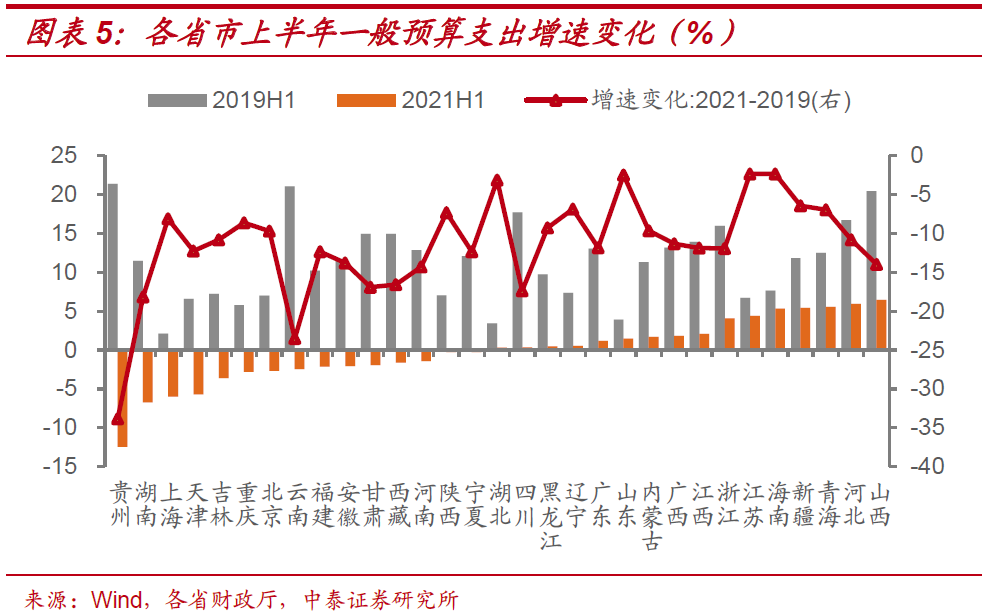Jump to
In the first half of 2021, Shanghai was the only province that had a "surplus" of about 94.26 billion yuan in revenue collection. The rest of the 30 provinces in China were in financial debt. This is a clear contract to the year 2017 when 6 provinces, namely, Guangdong, Jiangsu, Zhejiang, Fujian, Beijing and Shanghai had a surplus.
Doubleclick to visit the webpage
The deficit was recorded despite the various efforts made by various Provincial Governments to cut down their expenditure as shown in this chart
 The above 2 charts clearly express that China's economy is unlike before. They are now facing an economic downturn. Many Provincial Governments are not self-sufficient, requiring financial assistance from the Central Government.
The above 2 charts clearly express that China's economy is unlike before. They are now facing an economic downturn. Many Provincial Governments are not self-sufficient, requiring financial assistance from the Central Government.Most Chinese Analysts avoided giving any reason for the revenue deficit choked up by various Provincial Governments. But some trying to explain that the occurrence of this deficit is quite common. They explained that this is a natural occurrence when there were policy changes in the deployment of funds by the Central Government.
However, we are all aware of the following events which have taken place and were ongoing during these difficult periods:-
a) Covid Shutdowns and Control Measures
The zero Covid policy brings about frequent shutdowns in various cities and rural towns and counties in order to control the Covid Spread. Someone estimated that this has cost China some $45 billion per month or about 3% of China's GDP;
b) Power Failure and Electricity Load Shedding
The country suffered a country-wide power failure and load shedding after they banned the import of Australian coal end of 2020. Without allowing the power generating companies to increase the electricity tariff to cover up additional expenditure of importing the more expensive coal from other countries, the generating companies resorted to cutting down generation capacity causing country-wide power load shedding. These frequent power failures and load shedding must have hit many industries badly.
c) The US-China Trade War
The US-China Trade War started around 2018 and continued into 2021 has caused many foreign companies to pull their manufacturing facilities out of China. Such mass exits have caused many to lose their jobs and earning power, reducing the Provincial Government's revenue;
d) The Xinjiang Cotton Controversy
Although the Xingjiang Cotton Controversy was known to the public around March 2021, the event took place about a year ago in March 2020 when BCI, the Better Cotton Initiative took the initiative to suspend the licensing and assurance activities in Xinjiang. This action by BCI could have caused many jobs in Xinjiang as well in other parts of China.
back to top
Update: 16 August 2022
The financial condition of China has deteriorated further in 1st half of 2022. This time, all 31 provinces and cities in the mainland were unable to make ends meet. Guangdong, Henan, and Sichuan are the most serious with Sichuan rumored to be the worse for many years to come.
Henan had bank runs in some local banks.
Shanghai, Tianjin, and Hainan which used to be better provinces with higher revenues are now in the red.
The financial situation of the 31 provinces is worsening as shown in the following table.




